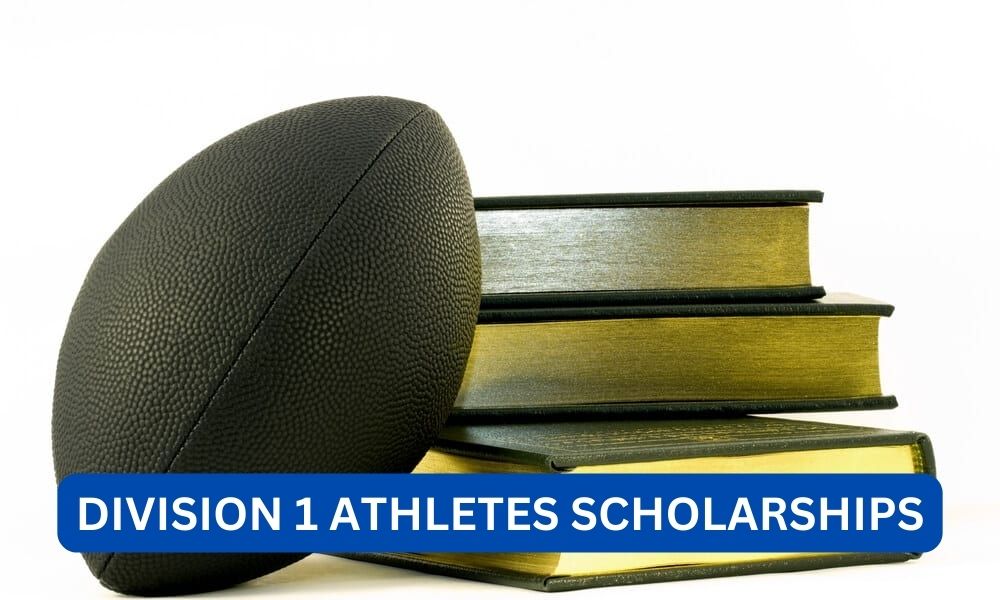The world of college sports is highly competitive and often seen as a stepping stone to a professional career in athletics. Division 1 (D1) is the highest level of competition in the National Collegiate Athletic Association (NCAA) and is home to some of the most talented and skilled athletes in the country. With the intense competition and high level of play, it is often assumed that all D1 athletes receive full scholarships to cover their education expenses. However, this is not always the case. In this article, we will explore the question – do all Division 1 athletes get scholarships?
Contents
Understanding Division 1 Athletics
Before delving into the question at hand, it is important to have a clear understanding of what Division 1 athletics entails. Division 1 is the highest level of competition in the NCAA and is divided into two subdivisions – Football Bowl Subdivision (FBS) and Football Championship Subdivision (FCS). FBS schools are typically larger, more well-known universities with higher budgets for their athletic programs, while FCS schools are smaller and have lower budgets.
Division 1 schools are known for their highly competitive and rigorous athletic programs, with athletes often dedicating a significant amount of time and effort to their sport. These athletes are expected to maintain a high level of performance both on the field and in the classroom.
Read:Do you have to report scholarships on taxes?The Myth of Full Scholarships for D1 Athletes
One of the biggest misconceptions about Division 1 athletics is that all athletes receive full scholarships to cover their education expenses. While it is true that D1 schools have a larger budget for their athletic programs, this does not necessarily mean that all athletes receive full scholarships.
In fact, according to the NCAA, only about 56% of Division 1 athletes receive some form of athletic scholarship. This means that almost half of D1 athletes are not receiving any financial aid for their athletic abilities. Additionally, the NCAA reports that the average scholarship amount for D1 athletes is around $14,000, which may not cover the full cost of attendance at some universities.
So why is there a misconception that all D1 athletes receive full scholarships? One reason could be the media coverage of high-profile sports such as football and basketball, where top athletes are often offered full scholarships to play for top-ranked schools. However, this is not the case for all sports and all athletes in Division 1.
The Reality for Non-Revenue Sports
While football and basketball may receive the most media attention and generate the most revenue for their schools, there are many other sports in Division 1 that do not receive the same level of recognition or financial support. These sports are often referred to as “non-revenue” sports, as they do not generate significant revenue for their schools.
Read:How Do you get a scholarship to harvard?Examples of non-revenue sports in Division 1 include swimming, track and field, and tennis. These sports may have talented and dedicated athletes, but they do not receive the same level of scholarship funding as revenue-generating sports. In fact, many non-revenue sports have a limited number of scholarships available, making it even more competitive for athletes to receive financial aid.
For these athletes, receiving a partial scholarship or no scholarship at all is a common reality. They may have to rely on other forms of financial aid, such as academic scholarships or student loans, to cover their education expenses.
The Impact of Title IX
Another factor that affects the distribution of scholarships in Division 1 athletics is Title IX. This federal law, enacted in 1972, prohibits discrimination based on sex in any educational program or activity that receives federal funding. This includes athletic programs at colleges and universities.
Under Title IX, schools are required to provide equal opportunities for male and female athletes. This means that the number of scholarships available for male and female athletes must be proportional to the number of male and female athletes in each sport. For example, if a school has 100 male athletes and 100 female athletes, they must provide an equal number of scholarships for each gender.
Read:Can freshman get scholarships?While Title IX has been instrumental in promoting gender equality in college sports, it has also had an impact on the distribution of scholarships. Since there are typically more male athletes than female athletes in Division 1, this means that there are more scholarships available for male athletes. This can make it more challenging for female athletes to receive a full scholarship, especially in sports where there are fewer opportunities for women, such as football.
Case Studies and Statistics
To further understand the reality of scholarships in Division 1 athletics, let’s take a look at some case studies and statistics.
Case Study 1: University of Alabama Football
The University of Alabama is known for its highly successful football program, with multiple national championships and top-ranked recruiting classes. It is often assumed that all football players at Alabama receive full scholarships, but this is not the case.
In 2019, the University of Alabama had a total of 85 football scholarships available, the maximum allowed by the NCAA. However, the team had a total of 123 players on its roster, meaning that 38 players were not receiving athletic scholarships. These players may have received other forms of financial aid, but they were not on full athletic scholarships.
Additionally, not all football scholarships at Alabama are full scholarships. The NCAA allows schools to divide their scholarships into partial scholarships, meaning that a player may only receive a portion of a scholarship. This allows schools to spread their scholarship funds across more players.
Case Study 2: University of Connecticut Women’s Basketball
The University of Connecticut’s women’s basketball team is one of the most successful programs in the country, with multiple national championships and a perfect 11-0 record in championship games. However, not all players on the team receive full scholarships.
In 2019, the University of Connecticut had a total of 15 scholarships available for its women’s basketball team. However, the team had a total of 18 players on its roster, meaning that three players were not receiving athletic scholarships. This is due to the fact that the NCAA only allows a maximum of 15 scholarships for women’s basketball teams.
Statistics on Scholarships in Division 1 Athletics
- Only 56% of Division 1 athletes receive some form of athletic scholarship.
- The average scholarship amount for D1 athletes is around $14,000.
- Football and basketball receive the most scholarship funding, while other sports receive significantly less.
- There are more scholarships available for male athletes than female athletes due to Title IX regulations.
- Many non-revenue sports have a limited number of scholarships available, making it more competitive for athletes to receive financial aid.
Conclusion:
In conclusion, the idea that all Division 1 athletes receive full scholarships is a myth. While top-ranked schools in high-profile sports may offer full scholarships to their athletes, this is not the case for all sports and all athletes in Division 1. Non-revenue sports, Title IX regulations, and limited scholarship funds all play a role in the distribution of scholarships in Division 1 athletics.
It is important to recognize that being a Division 1 athlete is not just about receiving a scholarship. These athletes are dedicated, hardworking, and highly skilled individuals who have earned their spot on their team through their talent and determination. Scholarships may provide financial support, but they do not define the value and worth of a Division 1 athlete.
Aspiring Division 1 athletes should not be discouraged by the reality of scholarships in college sports. Instead, they should focus on their passion for their sport and their dedication to their education. Scholarships may not be guaranteed, but the experience and opportunities that come with being a Division 1 athlete are invaluable.









